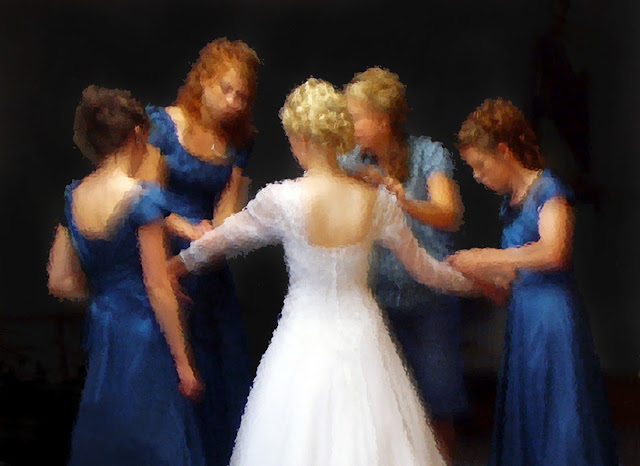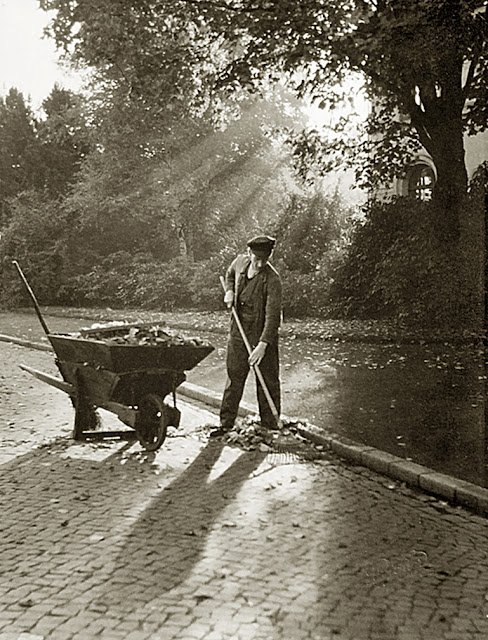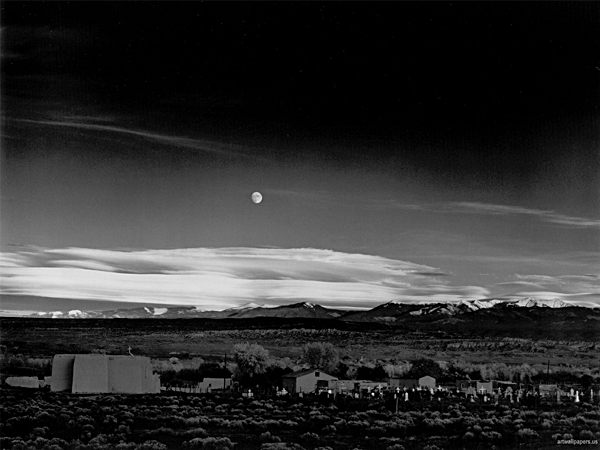Photoshop was created 28 years ago in 1988. Since then Photoshop and its many derivatives have become an essential part of photography with a great level of importance. Its ability to enhance photographs and to manipulate the image is well known. Photoshop certainly is much more than just an electronic retouching tool.
Unfortunately it is also misused by many. The relative ease of manipulating a photograph has led many to mistakenly believe that it is also a tool to correct mistakes that were made when taking the picture. As a matter of fact it has led to unqualified picture takers to market themselves as professional photographers, especially when combined with modern automatic everything cameras.
While Photoshop is certainly capable of manipulating photographs to quite an extend, it is still an absolute necessity to have basic photographic skills. Composition and design are as important today as they were in the past, as are lighting and posing. Today's automated camera controls can in no way make up for those skills and neither can Photoshop.
The following are good examples of how things can go wrong. This was a case of an all-controlling father of the bride who considered himself a professional wedding photographer and who insisted on not only arranging the group, but he also insisted on the photograph being taken at this particular location. The fact that a wedding party photographed with a background of a cemetery is less than ideal obviously eluded him. Photoshop saved the day when I was asked to move the wedding party to a much more appropriate background. Of course all of this could have been avoided by better photographic skills on part of the father in the first place.
I definitely disagree with that and answered:
“Why? Digital photography and Photoshop have considerably lowered my overhead (no film to buy, no processing costs) and I have full control over the final looks of my images instead of having to rely on some lab’s idea about what my images should look like. Film is a thing of the past. Just because Photoshop is available doesn't mean that the photographer doesn’t need the same skills as in the film days. Composition, lighting etc. are still as important as ever. Shooting digital is essentially nothing more than using a different means to record the image. The addition of Photoshop has enabled us to control the final outcome of our photographs to a greater degree than ever before which, when used correctly, will ultimately deliver the best quality images possible.”
He answered:
“However, when you change that image to some other image, then it is a second image. I know what you are saying above but I also know that you change some of your images to make them into something else.....and so do others. I just happen to think that the original image is what the end result should be.”
I answered:
“I understand what you are saying. However, just because Photoshop has the ability to substantially alter an original image doesn’t mean that its use will always lead to that. Photoshop offers the ability to ‘tweak’ our photographs to ultimately end up with better results. We have the ability to alter contrast and color saturation, both of which are much easier to do with Photoshop than during the film days. In the past photographers routinely retouched their photographs to reduce blemishes, for instance. Photographers used changes in exposure and development to reduce or increase contrast. Are these accepted methods really any different than using Photoshop to obtain the same results? Isn’t either approach effectively altering the image from what the camera saw? Then, of course, there is the question of what the ultimate purpose of taking a photograph is. Isn’t the final image, as envisioned by the photographer, what counts? In the past we used methods like solarization, for instance. That certainly is a considerable departure from what the initial photograph looked like, the same goes for posterization or bas relief images, all of which were routinely used to create photographic art beyond the original image as it came out of the camera. If those methods were okay in the past, then why isn’t the use of Photoshop acceptable as a means to create pieces of art derived from otherwise ordinary photographs? Even simple cropping is altering an image beyond what originally came out of the camera. Since none of us is perfect, we naturally get often useless photographs because of a variety of reasons. In many cases Photoshop has enabled me to save such photographs with the help of Photoshop. I see that as a benefit”.
I have come across similar opinions fairly often and I wonder if it is really a conviction or if it is more a resistance to change, combined with an underlying fear of learning a new method of working with our photographs.
To which extend Photoshop or similar programs are going to be used is ultimately a personal preference. However, it is a tool that should not be rejected off hand. If we are honest about our own work, most of us probably reject or throw away more of our photographs than we save and with digital photography that ratio has most likely increased. But with Photoshop we also have the possibility to save an otherwise useless picture and make it into something worth keeping.

This is a picture my wife took at a wedding. The original was nothing special and it was almost deleted. However, after taking a closer look, she asked me to apply my Photoshop skills. I tightly cropped the group to remove as much as possible of the clutter in the room which was further eliminated with various Photoshop tools. I then modified the image to give it a painting like appearance. The final result certainly is not at all what came out of the camera, but it is a photograph worth keeping. As it turned out, it is one of the favorites of the bride.


This photograph was taken by my father in Hamburg in 1949. He enhanced the sunrays in the background by carefully applying graphite dust to the rays on the negative to lighten them in the final enlargement and thus make them stand out more.
Two photographs, both manipulated to allow for a better end-result; photographs that would have less impact, which would be visually less pleasing had they not been enhanced. There should be no question that Photoshop or conventional retouching are means that enable us to make our photographs better than what our cameras are capable of doing by themselves. I consider that something very worthwhile.
One of the all-time great photographers, Ansel Adams, developed the famous Zone System, a means to arrive at the best possible results. It incorporated previsualizing the final outcome of the photograph and then applying careful light reading techniques, combined with special developing of the film and skillful printing and enlarging of the negatives. That certainly is a far cry from just accepting what the camera is capable of doing.

This photograph of his, "Moonrise over Hernandez" requires considerable modification. He came across this scene while driving home. The light was changing rapidly and Ansel Adams had only a very short time to pull it off. He quickly set up his camera. His light meter was not handy so he guessed at the exposure based on experience. Only careful developing of the film and considerable manipulation during printing resulted in this image. Adams said himself that the image, as it came out of the camera wouldn't have been very useful at all.
Photographers have manipulated the basic images as the come out of the camera for years via a multitude of methods. These ultimately allowed the photographer to arrive as close as possible as they imagined the final image to be like. Some of these methods were very difficult and time consuming. Modern image manipulating software like Photoshop has made this substantially easier and therefore should be embraced.
This can certainly go far beyond simple manipulation. It also offers methods to arrive at a final image that would be virtually impossible to do with just the camera alone. We now have the possibility to create images, photographs, only limited by imagination and skill. What comes out of the camera is just the beginning. Allow your imagination to be the guide to the final images you produce.
The relative ease of using Photoshop has allowed me to develop a new photographic venue where I use a photograph of a sculpture and combine that with a suitable photograph of a model, which I call Photosculpture. Of course this could be done via conventional mehtods, but the time involved makes it almost useless. Even with Photoshop I often spent considerable amounts of time to arrive at the final image. These too certainly are far removed from what came out of my camera initially.
Please note: The cover photo was stitched together from two individual photographs, easily done in Photoshop
________________________________________________________________________________________
To comment or to read comments please scroll past the ads below.
All ads present items of interest to Leica owners.
To comment or to read comments please scroll past the ads below.
All ads present items of interest to Leica owners.

For rare and collectible cameras go to: http://www.tamarkin.com/leicagallery/upcoming-shows
For rare and collectible cameras go to: http://www.tamarkin.com/leicagallery/upcoming-shows
Click on image to enlarge
Order: info@gmpphoto.com
Click on image to enlarge
Order: info@gmpphoto.com
Click on image to enlarge
Order: info@gmpphoto.com
Click on image to enlarge
Order: info@gmpphoto.com
Please make payment via PayPal to GMP Photography
Click on image to enlarge
Order: info@gmpphoto.com
Please make payment via PayPal to GMP Photography
Click on image to enlarge
Order: info@gmpphoto.com
Please make payment via PayPal to GMP Photography

















